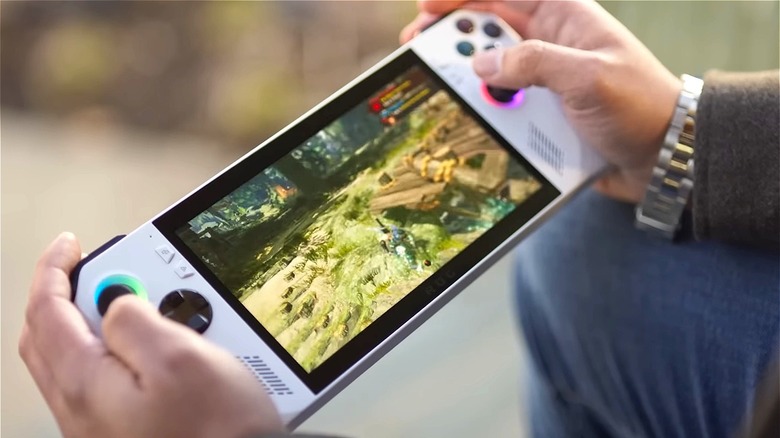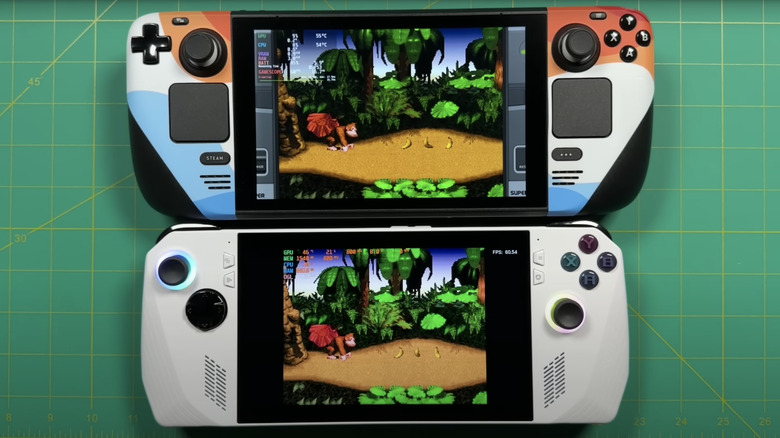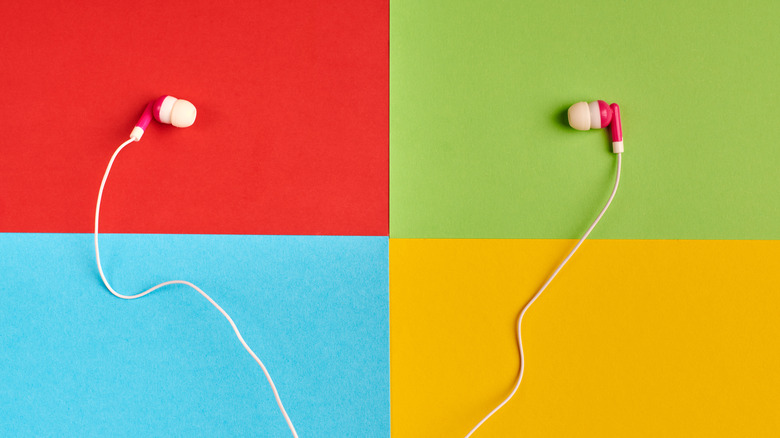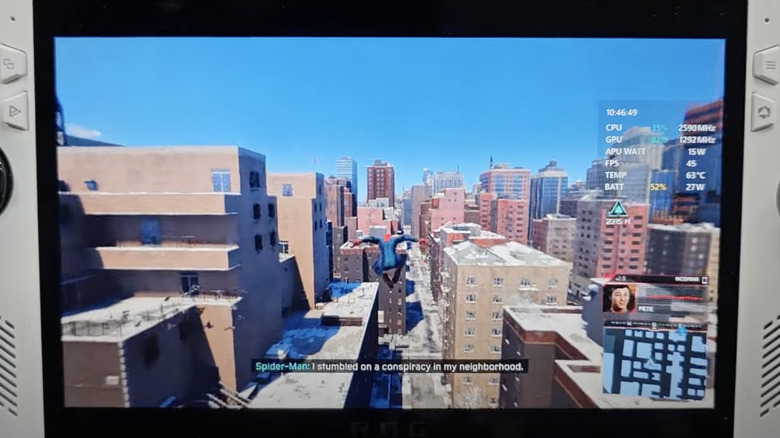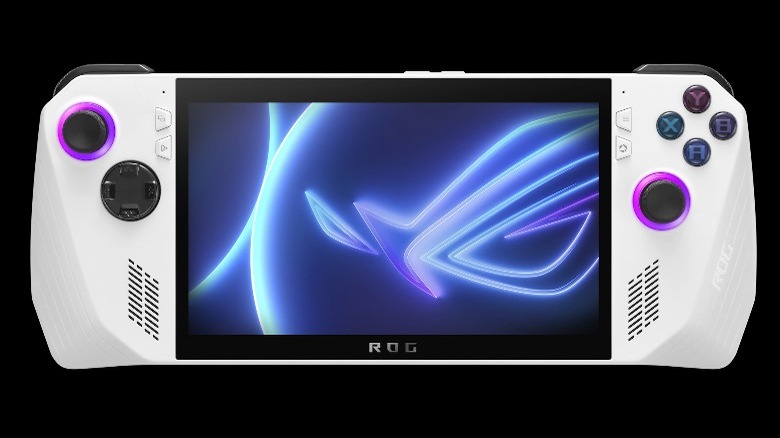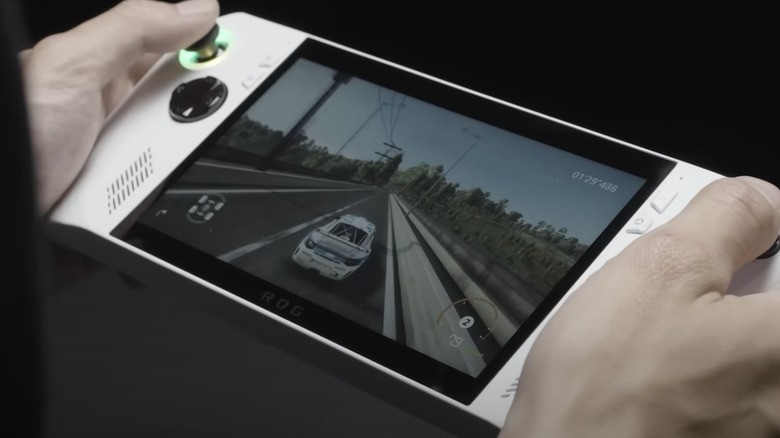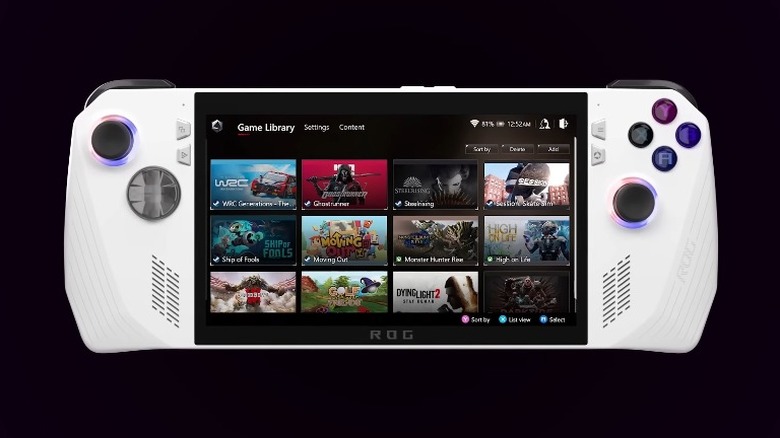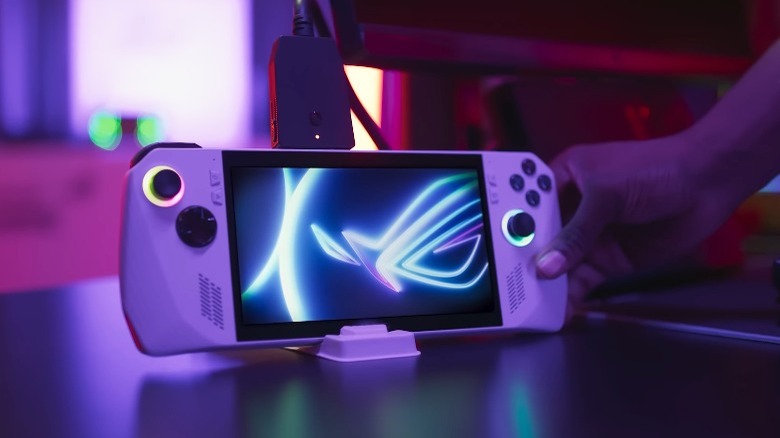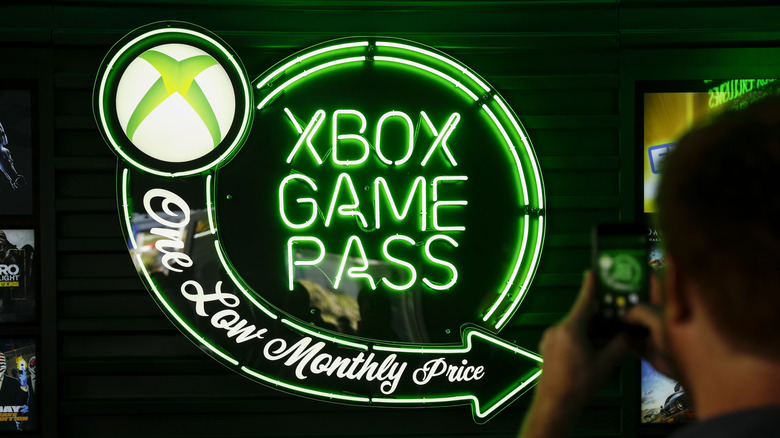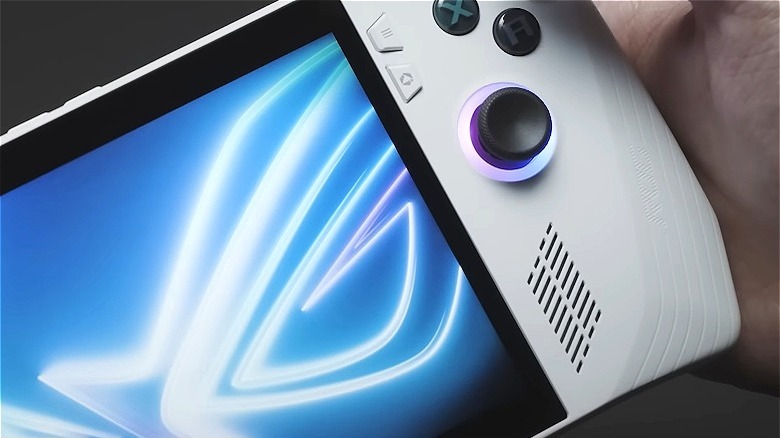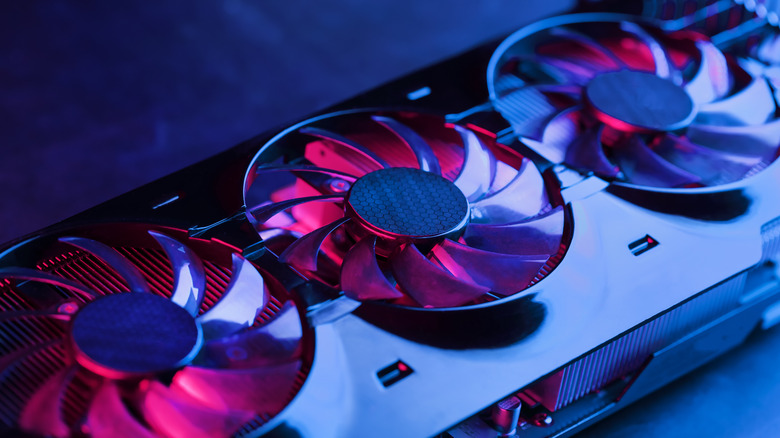10 Things The ASUS RoG Ally Can Do Better Than The Steam Deck
When Valve released the Steam Deck in 2022, the PC handheld took the gaming world by storm. After years of watching the Nintendo Switch dominate the hybrid handheld market, consumers started to move the goalposts, asking for a more powerful version of the Nintendo console so they could play take their favorite AAA titles on the go without having to sacrifice quality. With the Steam Deck, gamers can experience those games the way they were meant to be played –- for the most part.
Valve's breakthrough with its PC handheld encouraged other manufacturers to attempt to one-up Valve's best-selling handheld. Soon the Steam Deck met its first major competitor, the ASUS RoG Ally. The RoG Ally was released on June 13, 2023, after months of intrigue over its capabilities compared to the Steam Deck. Equipped with an AMD Ryzen Z1 extreme processor, among other core features that meet or exceed Valve's standards, the RoG Ally is currently retailing at $699. The price is not only competitive with the Steam Deck's tiered pricing but gives users a significant boost in power and performance at the cost of battery life.
While the RoG Ally may not knock the well-liked Steam Deck out of the running completely, as follow-ups and future competitors are sure to emerge, it may become to preferred option for gamers who want a little bit more out of their PC handheld. Here are 10 things the ASUS RoG Ally can do better than the Steam Deck.
Fit comfortably in your hand
Cosmetically, a major point for the RoG Ally is its favorable form factor. While the Steam Deck weighs approximately 1.47 pounds, the RoG Ally is the lighter of the two at 1.34 pounds. It is also slightly less cumbersome. The Steam Deck's dimensions are roughly 11.73 inches long, 4.6 inches tall, and just under two inches thick. While the length and height of the RoG Ally are similar, the ASUS handheld is less than half as thick as Valve's handheld, which is likely where the difference in weight comes from.
The RoG Ally's favorable form factor does not end there. The handheld does not feature the trackpads that are a core part of the Steam Deck's look and feel, but the product might be better for it. With no trackpads, the positioning of the analog sticks, d-pad, and size of buttons are able to better emulate the look and feel of a standard video game controller, namely an Xbox One Controller that many are used to holding. The trackpads, while innovative, forced the Steam Deck to have to sacrifice size on its d-pad and buttons which are instead positioned directly to the outside of its analog sticks.
Overall, the RoG Ally's form factor not only makes it the more portable device of the two but perhaps the most comfortable for console gamers.
Run Windows 11
One of the defining differences between the RoG Ally and the Steam Deck is the RoG Ally's use of Windows. The Steam Deck, meanwhile, uses Linux to power its operating system, Steam OS. While Linux might be more practical in many ways for a handheld, it can limit the number of accessible games at your disposal. The Steam Deck is meant to work best with one's Steam Library, and beyond that can emulate many classic titles. However, its ability to play PC games is directly tied to the games' availability on Steam. The RoG Ally, meanwhile, comes with Windows 11 and the ability to play games from other marketplaces and games that utilize anti-cheat software.
Windows 11 is admittedly a work in progress on handheld devices such as the RoG Ally. While the touchscreen does lend utility, users will have to use the right analog stick to emulate a mouse unless they have an external device or a Bluetooth mouse they can use for quicker navigation. They can also use the Ally's touchscreen for quicker navigation, though best practice is for the user to figure out what works for them through trial and error.
That said, the sheer amount of games at one's fingertips makes the RoG Ally well worth the investment. While the Steam Deck is capable of running Windows, it is not a process beginner will want to attempt, and the RoG Ally's specs make it the superior Windows machine anyway.
Display a 1080p screen
The RoG Ally's 1080p screen gives it an advantage over not only the Steam Deck but the Nintendo Switch as well. The RoG Ally comes loaded with a 7-inch full HD IPS touchscreen with a wide viewing angle. The Steam Deck can display up to 800p with its screen, while all three models of the Nintendo Switch can display up to 720p. While the RoG Ally lacks the OLED functionality of the Switch OLED, it more than makes up for it with its pristine, clear picture.
The RoG Ally's screen is a great choice for gamers who are looking to prioritize buying a portable gaming device with a high-quality display. The display is bright, clear, and responsive, making it ideal for playing fast-paced games at unheard-of resolutions on the go. The Steam Deck has a bit more screen size to work with thanks to its 16:10 aspect ratio, though games with a 16:9 aspect ratio are unable to take advantage of the extra pixels anyway. The 1080p screen is an important piece of the RoG Ally puzzle and is a major reason for it being the preferred handheld based on performance alone.
Produce superior color reproduction and brightness
The RoG Ally's screen is not just clear. It is also bright and packs a punch with its color reproduction. The RoG Ally's color covers a wider band of color in both the sRGB and the DCI-P3 color gamuts than most gaming handhelds, Steam Deck included.
The handheld also boasts a peak brightness of 500 nits, and independent tests have determined it can average 465 nits of brightness on most games compared to the Steam Deck's 170. The more nits a handheld has, the better it tends to fare when played in natural sunlight. The screen also sports a solid contrast ratio of 1000:1, which means fine details are more likely to pop in dark areas than they otherwise would.
Ultimately, the marriage of the RoG Ally's screen brightness combined with its color reproduction helps it reach a level the Steam Deck is unable to touch, enabling gamers to play demanding games on the go the way the developers intended.
Refresh faster on a 120Hz screen
The last key feature of the RoG Ally's impressive screen is its incredible 120Hz refresh rate, which allows the handheld's screen to display up to 120 frames per second. This means that the RoG Ally can provide an infinitely smoother and more responsive gaming experience beyond 60 FPS, the standard for the vast majority of AAA titles.
However, more games are beginning to make use of 120Hz screens to get the most out of the software, including "Fortnite," "Call of Duty: Warzone," and "Rocket League." Thanks to the RoG Ally's refresh rate, players will now have the ability to play games in 120 FPS when traveling.
The benefits of playing games at higher frame rates go beyond aesthetic appeal. Higher frame rates make for a more responsive experience and are particularly valuable in busy, fast-moving games such as first-person shooters and racing games. Anyone looking to use the RoG primarily for emulation and classic games might not be too worried about this, but it does mean that there is no game that is too demanding for RoG Ally's screen. Sadly, the same cannot be said for the Steam Deck.
Launch more games with Armoury Crate
One of the major benefits of the Steam Deck is the ease of use provided by SteamOS. Users can easily access their favorite games and launchers from one place. The RoG Ally has a necessary answer to SteamOS in the form of ASUS Armoury Crate, a software utility designed to act as a control panel and launcher for the system. The software can launch on startup and allows users to manage all aspects of their RoG Ally, including RGB illumination — another feature the Ally possesses that the Steam Deck does not.
Armoury Crate's use goes far beyond the ability to change the color of the Ally's RGB effects, however. The software is also used for aggregating the latest updates, drivers, manuals, and offers from ASUS. Users are encouraged to check this area of Armoury Crate frequently, particularly in the early days of the device when updates will be more prevalent.
Armoury Crate is also capable of acting as a launcher for your gaming library, providing real-time system information (similar to the system BIOS), such as CPU temperature, GPU usage, and memory usage. It also allows for saveable controller customization for multiple modes on each game individually. Controller modifications users are able to make include but are not limited to button mapping, shortcuts, and analog stick sensitivity. While SteamOS can perform many of the same functions, Armoury Crate is software specific to ASUS machines, RoG Ally included.
Utilize adaptive sync
Another feature the RoG Ally can perform that the Steam Deck cannot is adaptive sync. Adaptive sync is a feature in devices like the RoG Ally that aims to eliminate screen tearing and stuttering by allowing the internal display to adjust its refresh rate to match the frame rate of the content being rendered by the graphics card. This stuttering typically occurs when the refresh rate of the display and the frame rate of the content are not in sync. Adaptive sync capability equips the machine with the know-how to recognize this and make internal corrections on the fly to ensure as smooth of an experience as possible.
Adaptive sync comes in one of two forms: AMD FreeSync and NVIDIA G-Sync. Since the RoG Ally comes packed with an AMD Ryzen Z1 Series processor, it utilizes AMD FreeSync. Adaptive sync can also be beneficial for other applications, such as video playback and watching movies.
The one drawback to adaptive sync is that not all monitors support it, but since the RoG Ally is a PC handheld, its screen is able to support this core feature. Adaptive sync can also cause input lag at higher frame rates, but the sheer strength of the Ally's screen allows the system to get the most out of the feature. The Steam Deck is unable to perform this without the aid of a compatible dock to a monitor that supports FreeSync.
Integrate Xbox Game Pass
Both the RoG Ally and the Steam Deck are able to access Xbox Game Pass, but the Ally has some clear advantages. For one, as a Windows machine, the RoG Ally offers native support for Game Pass. As a result, users can install Game Pass straight to their device and jump right into their favorite Xbox games. Steam Deck users can only use the Game Pass app after installing the Microsoft Edge browser and altering the app's launch options.
The RoG Ally's native support for Xbox Game Pass goes a step further with downloadable games. Many will prefer playing games natively as opposed to streaming them, and many Xbox Game Pass games are compatible with Windows in this way. The same cannot be said for the Steam Deck's Linux-based OS, so those looking to play Xbox games with Game Pass will need to rely on streaming. Downsides to streaming games include occasional input lag, possible buffering, and occasional variance in quality.
The RoG Ally also comes with three months of Xbox Game Pass Ultimate included, granting players instant access to a huge library of streamable and downloadable games.
Produce better sound with Dolby Atmos
The RoG Ally boasts excellent built-in speakers and their quality is taken up a notch thanks to Dolby Atmos. Dolby Atmos is Dolby's surround sound technology that is prevalent in high-end televisions, PCs, and any piece of electronic equipment that produces or facilitates audio. Surround sound technology is nothing new, but Atmos expanded on this by adding height channels, allowing sounds to be interpreted as three-dimensional objects with neither vertical nor horizontal limitations. This makes for a fuller, more complete sound, and since Atmos has already made its way to the Xbox Series X, it is only fitting that Xbox Game Pass-enabled RoG Ally would also take advantage of it.
Dolby Atmos makes for a more immersive audio experience because it can place sounds anywhere on a three-dimensional plane. This helps Atmos create a more realistic soundscape than traditional surround sound systems. This technology is typically reserved for higher-end TVs from major brands, so the fact that it is baked into the RoG Ally's $699.99 costs only makes it more worth picking up.
The Steam Deck, meanwhile, does not support Dolby Atmos. However, both devices support a headphone jack, which is interesting considering the general pivot that smartphones have made to Bluetooth.
Cool quietly
The last major thing the ASUS RoG Ally can do that the Steam Deck cannot is cool its CPU at a reasonable volume. The biggest reason for this is the RoG Ally's total number of fans outnumbers the Steam Deck two-to-one. The Ally's dual-fan setup allows both fans to work smarter instead of harder while keeping its CPU at a reasonable temperature. The Steam Deck has a single fan located towards the top of the device and is designed to keep the device cool. However, the fan can get noisy and make a whirring sound whenever the system is under above-average stress.
The RoG Ally's Zero Gravity Thermal System uses a specially designed heat pipe along with its dual fans to cool the device. The science behind the system's anti-gravity heat pipes is worth a read but is most notable for the way it sets the RoG Ally apart from the Steam Deck.
While the Steam Deck uses a passive cooling system without any other active cooling components, the RoG Ally utilizes a hybrid active cooling system. The Ally's system not only makes it better equipped to preserve itself during rigorous gaming sessions but also lends itself to a more enjoyable experience with less fan noise to get in the way of its Dolby Atmos-powered speakers.
